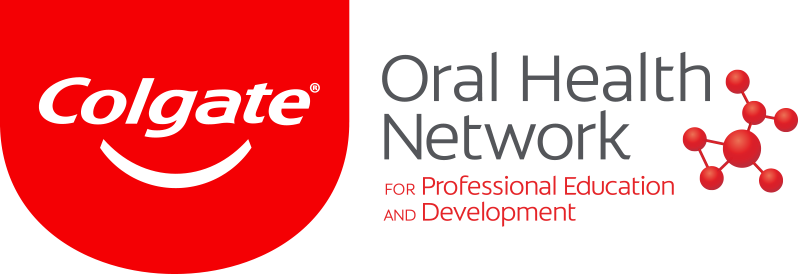I am asked all of the time what the next big thing is going to be in dentistry. What new technology or technology is going to change dental practice? We certainly have made huge advancements in a number of areas, such as restorative therapy, implants and esthetic dentistry. I believe the direction of the next great thing in dentistry is actually going to take place in the oral-systemic connection.
Most dentists are familiar with this connection as being how oral health affects systemic health. I’m going to look at the oral-systemic connection from a completely different angle — the oral-systemic esthetic perspective.
We all can do a magnificent job of making teeth look great and giving people a healthy and beautiful smile. Esthetic dentistry has been an absolute boom during the last 30 years, especially when it comes to such innovative techniques as teeth whitening and minimally invasive veneers like Cristal Veneers by Aurum Ceramics. Now that the teeth look good, what about the peri-oral areas around the mouth? If the teeth look good but we ignore the rest of the face, then we have really limited what we have done in esthetic dentistry. It is time to give serious consideration to extending the oral-systemic connection to the esthetic realms and facial pain areas of the face, which dentists are more familiar with than any other health-care practitioner.
The art and science of facial injectables
Botox is a trade name for botulinum toxin, which comes in the form of a purified protein. The mechanism of action for Botox is really quite simple. Botox is injected into the facial muscles but really doesn’t affect the muscle at all. Botulinum toxin affects and blocks the transmitters between the motor nerves that innervate the muscle. There is no loss of sensory feeling in the muscles. Once the motor nerve endings are interrupted, the muscle cannot contract. When that muscle does not contract, the dynamic motion that causes wrinkles in the skin will stop. The skin then starts to smooth out, and in approximately three to 10 days after treatment, the skin above those muscles becomes nice and smooth. The effects of Botox last for approximately three to four months, at which time the patient needs retreatment.
embedImagecenter("Imagecenter_1_526",526, "large");
The areas that Botox is commonly used for smoothing of facial wrinkles are the forehead, between the eyes (glabellar region) and around the lips. Botox has been FDA approved as a primary therapy for chronic migraine and facial pain cases and has important clinical uses in TMJ and bruxism cases, and especially for patients with chronic TMJ and facial pain.
Botox is also used to complement esthetic dentistry as a minimally invasive alternative to surgically treating high lip line cases; to help denture patients who have trouble adjusting to new dentures; to provide lip augmentations; and to help retrain facial muscles when necessary in orthodontic cases. No other health-care provider has the capability to help patients in so many areas as do dentists.
Dermal fillers, such as hyaluronic acids (Juvederm, Restylane) and calcium hydroxylapatite fillers (Radiesse), are commonly used to add volume to the face in the nasolabial folds, oral commissures, lips and marionette lines. As we age, collagen is lost in these facial areas and these lines start to deepen. These dermal fillers are injected right under the skin to plump up these areas so that these lines are much less noticeable.
Dermal fillers are also used for lip augmentation and are used by dentists for high lip line cases, uneven lips, and to make the peri-oral area more esthetic. The face looks more youthful and is an essential component to every esthetic dentistry case that you do.
I have been trained and have had experience with these Botox and dermal fillers for a while, and these are very easy procedures to accomplish. We as dentists give injections all the time — this is just learning how to give another kind of injection that is outside the mouth but is in the same area of the face that we inject all the time.
We also have a distinct advantage over dermatologists, plastic surgeons, medical estheticians and nurses who commonly provide these procedures in that we can deliver profound anesthesia in these areas before accomplishing these filler procedures. I will never forget that during my training, my patients were completely comfortable during dermal filler and lip augmentation therapy because of my ability to deliver proper anesthesia to these areas. The patients treated by other health practitioners were quite uncomfortable and indeed this is one of the biggest patient complaints about dermal fillers.
Most state boards now allow general dentists to provide Botox and dermal fillers to patients for both dental esthetic and therapeutic uses. Why wouldn’t you provide these services, you already offer whitening and esthetic dentistry to your patients? I would make the strong argument that dentists are the true specialists of the face, much more so than most other health-care professionals, including dermatologists and plastic surgeons. It is time to stand up for what we know and what we can accomplish.
Is there a market for these services? In 2011, close to $5 billion dollars were spent on botulinum toxin and dermal filler therapy in the United States. Think about this — that was money spent on non-surgical elective esthetic procedures that could have been spent on esthetic dentistry, but the patient made a choice. Interestingly, these procedures become more popular in an uncertain economy because patients want to do something to look better that is more affordable than surgical esthetic options.
How to get started
Like anything else a dentist does, this requires comprehensive practical training. The learning curve is short for dentists because you already know how to give comfortable injections.
The American Academy of Facial Esthetics (www.FacialEsthetics.org), with more than 50 local courses a year, has trained more than 6,000 dental professionals from 48 states and 28 countries through comprehensive hands-on live patient two-day facial esthetic training sessions with Botox and dermal fillers.
Finding practice models is easy — start asking family and friends who will fight to have you practice on them. If you want further proof, ask women in your practice if they have had or would like Botox or dermal filler therapy. You will be overwhelmed at the positive response and shocked at the number of people you know already receiving these treatments.
Most dental liability insurers now cover the use of Botox and dermal fillers in their existing policy or with a reasonably priced rider.
The hottest topic in dentistry right now that will influence dentistry for the rest of your career is the integration of Botox and dermal fillers into surgical, restorative, prosthodontic, periodontic, orthodontic and esthetic dental treatment plans. This opens up well proven treatment options that we legally, morally and ethically have to offer patients. Get trained today and join the thousands of members of the American Academy of Facial Esthetics. It is a perfect complement to your daily dental practice.
Note: This article appeared in Dental Tribune U.S. Edition, Vol. 7 No. 3, March 2012.
NEW YORK, NY, USA: Ed Matthews, president and CEO of Sure Business Logic, was recently elected a fellow of the International Academy of Dental Facial ...
NEW YORK, N.Y., USA: Through its partnership with Wiley Publishing — a publisher of academic materials for professionals — Aspen Dental is ...
According to the latest figures from the United Nations Organisation UNAIDS, more than 34 million people worldwide are currently living with HIV virus. New ...
NEW YORK, NY, USA: A facial exercise programme involving devices used by dentists has shown prospects for the rehabilitation of facial nerve damage. ...
Dr Mahfuz Rahman is a dentist and founder of Frisco Dental Studio in Texas in the US. He is also a dental photography enthusiast and takes great pleasure in...
Dr. José Roberto Moura graduated from the University of Taubaté (Brazil) in 1983 with a specialty degree in Restorative Dentistry. He later ...
CHARLOTTE, N.C., US: Dentsply Sirona, the world’s largest manufacturer of professional dental products and technologies, in partnership with Smile Train,...
Sometimes bad things happen to good people. Unfortunately, according to Murphy’s Law, it will also happen at the most inopportune time and at a ...
No matter what size your practice is, reaching out to new and prospective patients is a must for every dentist. Even dentists with a robust roster of ...
COLUMBUS, Ohio, USA: Researchers have found that children who are learning to walk are at the highest risk of injury from baby bottles, sippy cups and ...
Live webinar
Fri. 26 April 2024
12:00 PM EST (New York)
Live webinar
Mon. 29 April 2024
12:30 PM EST (New York)
Prof. Roland Frankenberger Univ.-Prof. Dr. med. dent.
Live webinar
Tue. 30 April 2024
1:00 PM EST (New York)
Live webinar
Fri. 3 May 2024
1:00 PM EST (New York)
Live webinar
Tue. 7 May 2024
8:00 PM EST (New York)
Live webinar
Thu. 9 May 2024
8:00 PM EST (New York)
Live webinar
Mon. 13 May 2024
9:00 AM EST (New York)



 Austria / Österreich
Austria / Österreich
 Bosnia and Herzegovina / Босна и Херцеговина
Bosnia and Herzegovina / Босна и Херцеговина
 Bulgaria / България
Bulgaria / България
 Croatia / Hrvatska
Croatia / Hrvatska
 Czech Republic & Slovakia / Česká republika & Slovensko
Czech Republic & Slovakia / Česká republika & Slovensko
 France / France
France / France
 Germany / Deutschland
Germany / Deutschland
 Greece / ΕΛΛΑΔΑ
Greece / ΕΛΛΑΔΑ
 Italy / Italia
Italy / Italia
 Netherlands / Nederland
Netherlands / Nederland
 Nordic / Nordic
Nordic / Nordic
 Poland / Polska
Poland / Polska
 Portugal / Portugal
Portugal / Portugal
 Romania & Moldova / România & Moldova
Romania & Moldova / România & Moldova
 Slovenia / Slovenija
Slovenia / Slovenija
 Serbia & Montenegro / Србија и Црна Гора
Serbia & Montenegro / Србија и Црна Гора
 Spain / España
Spain / España
 Switzerland / Schweiz
Switzerland / Schweiz
 Turkey / Türkiye
Turkey / Türkiye
 UK & Ireland / UK & Ireland
UK & Ireland / UK & Ireland
 International / International
International / International
 Brazil / Brasil
Brazil / Brasil
 Canada / Canada
Canada / Canada
 Latin America / Latinoamérica
Latin America / Latinoamérica
 China / 中国
China / 中国
 India / भारत गणराज्य
India / भारत गणराज्य
 Japan / 日本
Japan / 日本
 Pakistan / Pākistān
Pakistan / Pākistān
 Vietnam / Việt Nam
Vietnam / Việt Nam
 ASEAN / ASEAN
ASEAN / ASEAN
 Israel / מְדִינַת יִשְׂרָאֵל
Israel / מְדִינַת יִשְׂרָאֵל
 Algeria, Morocco & Tunisia / الجزائر والمغرب وتونس
Algeria, Morocco & Tunisia / الجزائر والمغرب وتونس
 Middle East / Middle East
Middle East / Middle East
:sharpen(level=0):output(format=jpeg)/up/dt/2024/04/Envista-names-Paul-Keel-new-CEO-1.jpg)
:sharpen(level=0):output(format=jpeg)/up/dt/2024/02/vVARDIS_article_1920x1080px.jpg)
:sharpen(level=0):output(format=jpeg)/up/dt/2024/04/Study-links-e-cigarette-use-with-increased-risk-of-heart-failure.jpg)
:sharpen(level=0):output(format=jpeg)/up/dt/2024/04/web_FDC_small.jpg)
:sharpen(level=0):output(format=jpeg)/up/dt/2024/04/web_Bassi.jpg)








:sharpen(level=0):output(format=png)/up/dt/2011/11/ITI-LOGO.png)
:sharpen(level=0):output(format=png)/up/dt/2014/02/A-dec.png)
:sharpen(level=0):output(format=png)/up/dt/2014/02/3shape.png)
:sharpen(level=0):output(format=png)/up/dt/2022/10/DMP-logo-2020_end.png)
:sharpen(level=0):output(format=png)/up/dt/2023/06/Align_logo.png)
:sharpen(level=0):output(format=png)/up/dt/2014/02/EMS.png)
:sharpen(level=0):output(format=jpeg)/up/dt/e-papers/330729/1.jpg)
:sharpen(level=0):output(format=jpeg)/up/dt/e-papers/330727/1.jpg)
:sharpen(level=0):output(format=jpeg)/up/dt/e-papers/330725/1.jpg)
:sharpen(level=0):output(format=jpeg)/up/dt/e-papers/325039/1.jpg)
:sharpen(level=0):output(format=jpeg)/up/dt/e-papers/325007/1.jpg)
:sharpen(level=0):output(format=jpeg)/up/dt/e-papers/313543/1.jpg)
:sharpen(level=0):output(format=jpeg)/up/dt/2017/01/7bfc442362b1c66cfd6815a7d2f2d12f.jpg)

:sharpen(level=0):output(format=jpeg)/up/dt/2024/04/Envista-names-Paul-Keel-new-CEO-1.jpg)
:sharpen(level=0):output(format=gif)/wp-content/themes/dt/images/no-user.gif)
:sharpen(level=0):output(format=jpeg)/up/dt/2015/01/419c45c6b01f6c2d343e6ee3a28dd7f9.jpg)
:sharpen(level=0):output(format=jpeg)/up/dt/2017/01/ea8f947d82d5f73431df8a5f57457cdb.jpg)
:sharpen(level=0):output(format=jpeg)/up/dt/2009/12/912d0056f17910246a17ada34a47e48b.jpg)
:sharpen(level=0):output(format=jpeg)/up/dt/2011/05/0975f7e5f4bc547c34340daca0ea4c02.jpg)
:sharpen(level=0):output(format=jpeg)/up/dt/2024/03/Photography-is-absolutely-critical-for-the-modern-dental-practice.jpg)
:sharpen(level=0):output(format=jpeg)/up/dt/2011/06/4f2d4253f4c60b4457cb433958d64915.jpg)
:sharpen(level=0):output(format=jpeg)/up/dt/2023/05/Dentsply-Sirona-FDI-and-Smile-Train-deliver-first-ever-global-protocols-for-digital-cleft-treatment.jpg)
:sharpen(level=0):output(format=jpeg)/up/dt/2011/03/047104fc6108329475bd00f0b7102b7c.jpg)
:sharpen(level=0):output(format=jpeg)/up/dt/2010/12/086449cb63a6a219a4f6c8703afa5e07.jpg)
:sharpen(level=0):output(format=jpeg)/up/dt/2012/05/04c28b0fbe3ac4af527baaa10943e350.jpg)





:sharpen(level=0):output(format=jpeg)/up/dt/2024/04/Envista-names-Paul-Keel-new-CEO-1.jpg)
:sharpen(level=0):output(format=jpeg)/up/dt/2024/02/vVARDIS_article_1920x1080px.jpg)
:sharpen(level=0):output(format=jpeg)/up/dt/2024/04/Study-links-e-cigarette-use-with-increased-risk-of-heart-failure.jpg)
:sharpen(level=0):output(format=jpeg)/up/dt/e-papers/330727/1.jpg)
:sharpen(level=0):output(format=jpeg)/up/dt/e-papers/330725/1.jpg)
:sharpen(level=0):output(format=jpeg)/up/dt/e-papers/325039/1.jpg)
:sharpen(level=0):output(format=jpeg)/up/dt/e-papers/325007/1.jpg)
:sharpen(level=0):output(format=jpeg)/up/dt/e-papers/313543/1.jpg)
:sharpen(level=0):output(format=jpeg)/up/dt/e-papers/330729/1.jpg)
:sharpen(level=0):output(format=jpeg)/up/dt/e-papers/330729/2.jpg)
:sharpen(level=0):output(format=jpeg)/wp-content/themes/dt/images/3dprinting-banner.jpg)
:sharpen(level=0):output(format=jpeg)/wp-content/themes/dt/images/aligners-banner.jpg)
:sharpen(level=0):output(format=jpeg)/wp-content/themes/dt/images/covid-banner.jpg)
:sharpen(level=0):output(format=jpeg)/wp-content/themes/dt/images/roots-banner-2024.jpg)
To post a reply please login or register